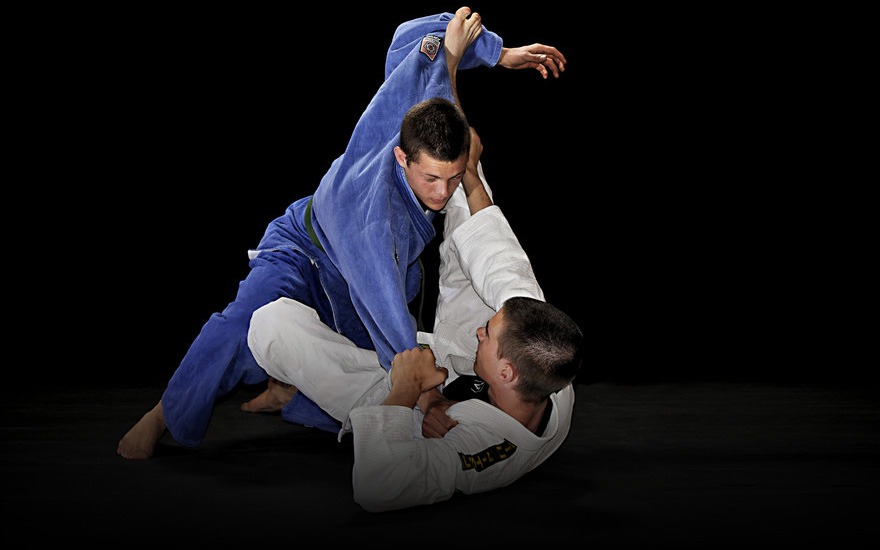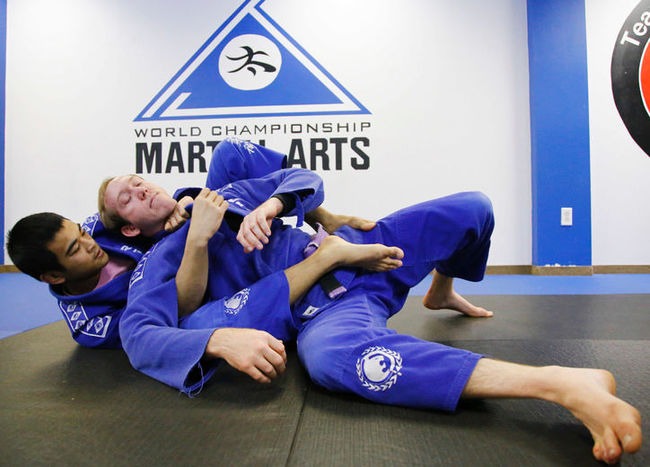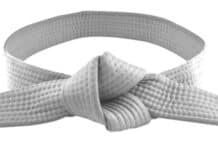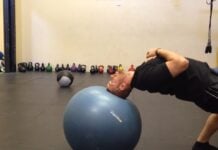
The martial art of Brazilian Jiu-Jitsu becomes a more complex puzzle the more you study it. Contrary to the popular expectation that you are going to learn it better the more time you spend doing it, Jiu-Jitsu just offers more complicated mazes. Don’t get me wrong, you will understand it better, you might even turn out to be a world-class competitor. But it is hard to imagine anyone fully grasping the essence of the Gentle Art. It all starts with techniques, which are simply motion patterns that can easily be mastered. Next, it is all about connecting them in a working system, creating an individual game for yourself. However, once you have sufficient technical mastery, Jiu-Jitsu takes a surprising turn. Suddenly it’s not about strategy and tactics anymore. Jiu-Jitsu concepts start to take over where techniques left off. This is where the abyss of Brazilian Jiu-Jitsu truly opens up.
In a series of future articles, we’re going to attempt to clarify as much of the Brazilian Jiu-Jitsu concepts as we can. Of course, feel free to throw in your experiences and opinions on the subject, so that we can all come to understand our art just a little bit better. To start things off, I’m going to lay out a founding principle that has massively influenced my game. It is one of those crucial Jiu-Jitsu concepts that open up areas of the art that are so obvious that most people miss them. let’s talk about the Tripod principle of Jiu-Jitsu.
Learning Jiu-Jitsu Concepts
Jiu-Jitsu concepts are not hard to understand in theory. When it comes to practicing them, things get a bit trickier. Do you know how every time you look to practice a new technique during rolling, you have to stop and think about it instead of flowing? Well, with Jiu-Jitsu concepts it gets even more complicated. When you add in a technique, let’s say a mounted armbar, you start thinking only form the mount. While in other positions during rolling, you’re going to go with your usual flow.
However, concepts apply to every part of grappling martial arts. As such, you’ll suddenly seem worse off when you first attempt to integrate a concept into your game. That is why the conceptual game is much better suited for advanced students (purple belts and above). So, whenever you include a new concept into your game do not be afraid to take it slowly. It is going to take much more time to get comfortable with a Jiu-Jitsu concept than with a technique, especially when going live.
The Tripod Principle Of Jiu-Jitsu
As far as the Tripod principle goes, it is very simple in theory. Jiu-Jitsu, much like a tripod stool, is based on three main pillars. These pillars are base, posture, and structure. Staying in line with our tripod stool analogy, if you take away one of these foundational pillars, the structure’s stability is weakened. Take away another one and it can barely stay upright, if at all. if you take away all three, the tripod stool seizes to exist.
From an opposite perspective, you want to have all three foundational pillars for yourself. Before I go on I want to make something very clear. The Tripod principle applies to both the bottom and the top game. For that matter, it applies both standing and when on the ground. It is not limited to top positions only. So, wherever you find yourself positionally, you need to make sure you have all three foundational pillars of the tripod principle. In an ideal situation, you would have all three firmly in place, while taking all of them away from your opponent. Ideal situations, though, are in reality extremely rare in grappling.
A great approach to always staying ahead of your opponent is watching out for the score. Let’s say that you have all three pillar and your opponent has all three. The chess game here is taking all of his away while keeping all of yours. Since in reality, this is quite difficult to obtain, you need to at least make sure you lead the score. So while the ideal score is 3:0 for yourself (you have base posture and structure, your opponent has none), in real life it’s going to be 3:2, 3:1 or 2:1 way more often. A draw means you need to regain advantage before looking to dismantle your opponent.
The Principle Of Base
First of the three pillars that make the Tripod principles is base. As far as Jiu-Jitsu concepts go, this is one that you learn during your first weeks of training. A strong base is a starting point for a successful game. Once again, the base is not just a top game concept. While clear base on the bottom is not always apparent, the opportunity to build one is. let me explain.
If you find yourself in side control, you’re going to need the power of your feet on the mats in order to go for an escape option. Even the most basic bridge and shrimp escape require at least one foot on the ground. That is base. Now imagine that your opponent has both your feet wrapped and off the ground. Escaping becomes much more difficult now.
From the top position, this concept is easier to grasp. A good base means good balance which in turn means you can start looking to take away one of your opponent’s pillars. Usually, when standing, a staggered stance translates to a better base than a parallel one. It’s one of the basic concepts of martial arts in general.
Taking base away from your opponent is usually the first thing people think off when they’re on the bottom. Every sweep or submission from the bottom requires a shift in weight, which means disrupting the opponent’s base. We’ already talked about an example of taking base away from an opponent that’s on the bottom. In both cases, taking away their base while retaining your results with a clear advantage for you. It sounds simple, but it gets complicated when you try it. Well, at least in the beginning.
Posture For The Win
Posture is also one of the foundational Jiu-Jitsu concepts you learn as a beginner. What most people fail to do is retain this information in the long run. Failure is a great teacher, and this soon gets rectified, although after numerous errors. Staying upright when attacking from the top is once again clear. As long you have correct posture there’s not much an opponent can do attack wise. Well, other than attacking your base.
Before we look at how posture helps a grappler fighting of his/her back, let’s define the term first. Most people perceive posture as the prevention of a forward lean. While leaning to the front, back and sides do constitute a broken posture, so does twisting. Twisting one’s spine also breaks posture. This is an often overlooked concept in battles for posture. So, whether you’re on the top or bottom, keep your posture strong in order to dominate. This includes every plane of motion that the spine is capable of going through. Form the top, think about folding and opponent in half. From the bottom, think about a hip rewind. Both are great examples of completely broken posture.
The Pillar Of Structure
The structure is probably the most complicated pillar of the Tripod principle. Before we get lost in the maze that is structured, let’s dumb it down. In terms of Jiu-Jitsu concepts, the structure is defined by the placement of your body and limbs in regard to your opponent.
Let’s use top side control as an example. The concept of side control is to get your body across your opponent’s body. Holding side control requires correct weight distribution and precise angling of the body. Both of these aspects fall into the “structure” category. Furthermore, placing your arms in one of the few dominant positions from top side control completes the principle. From side control, a structural concept is placing your arms either on one side of your opponent’s body, or staggered across both. Every placement of the arms opens up different attacks while preventing different movements of the opponent. That is structure at work.
Now, when looking to shift the score to your advantage, the aim is to take their structure away with the help of your own structure. The structure is also the primary tool for taking away both base and posture. As such, it should be the one thing you safeguard most carefully during a roll or a match. That way, you’re at least be able to get o a 1:0 score, the minimal required for successful attacks. Simple yet complicated right?
Now that you are aware of the Tripod principle you can expect two things. The first is that your rolls are going to become a lot less efficient before they improve. It takes time to consciously integrate the principle into your game, so be patient. Second, you can expect that whatever technique you choose to apply is going to work if you outscore your opponent by at least 1.
A Practical Blueprint for the Journey Through Brazilian Jiu-Jitsu
















































